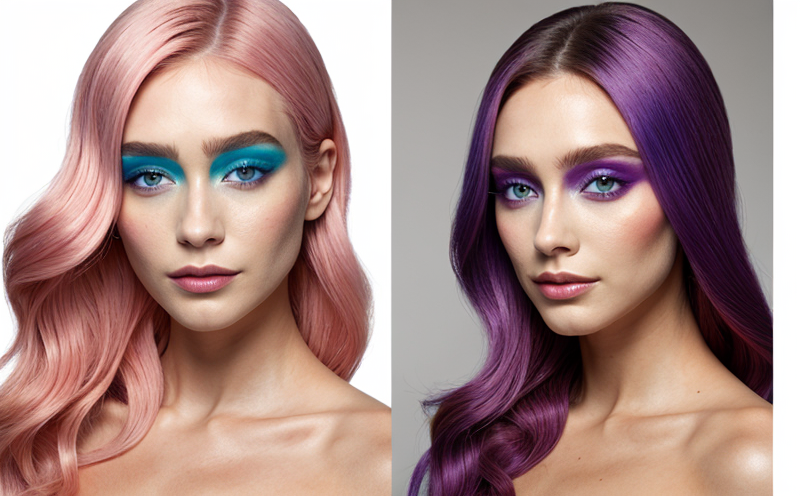Essential Oil Testing in Lip and Cheek Products
Essential oil testing is a critical component of quality assurance in cosmetic products, especially those that are applied to the lips and cheeks. These areas are particularly sensitive due to their constant exposure to environmental elements and frequent contact with other surfaces. Ensuring the safety and efficacy of essential oils used in these formulations is paramount for consumer protection. This service focuses on the testing procedures and analytical methods employed to ensure compliance with international standards such as ISO, ASTM, and IEC.
Essential oils are natural compounds extracted from plants that contribute unique scents and properties to cosmetic products. In lip and cheek products, essential oils can enhance fragrance, provide moisturizing benefits, or offer additional therapeutic effects. However, their presence in these areas necessitates stringent testing protocols to prevent adverse reactions and ensure product stability.
The testing process begins with the selection of appropriate samples from various batches of the cosmetic product. These samples are subjected to a series of tests designed to evaluate the purity, concentration, and potential allergenicity of the essential oils. Chromatographic techniques such as Gas Chromatography-Mass Spectrometry (GC-MS) are commonly used for identifying and quantifying the components present in the essential oil extracts.
For quality managers and compliance officers, understanding the specific testing methods is crucial. GC-MS allows for precise identification of all constituents down to parts per billion levels, ensuring that no harmful substances are inadvertently introduced into the product. This method also helps in verifying the authenticity of the essential oils used, preventing the substitution of cheaper or potentially hazardous alternatives.
R&D engineers need to be aware of these testing protocols as they contribute significantly to product development and innovation. By adhering to stringent testing standards, they can ensure that their formulations meet both regulatory requirements and consumer expectations. The use of advanced analytical techniques not only enhances the safety profile but also improves the overall quality and performance of lip and cheek products.
Compliance officers must stay abreast of the latest industry standards and regulations to maintain product integrity. Ensuring compliance with ISO 18276, which covers essential oils in cosmetics, is a key responsibility. This standard provides guidelines for the composition, labeling, and use of essential oils in cosmetic products, ensuring that they are safe for consumer use.
In summary, essential oil testing in lip and cheek products involves rigorous analytical methods aimed at guaranteeing safety, efficacy, and compliance with international standards. This service is tailored to meet the needs of quality managers, compliance officers, R&D engineers, and procurement specialists, providing them with the insights necessary to maintain high-quality cosmetic formulations.
Why It Matters
The importance of essential oil testing in lip and cheek products cannot be overstated. These areas are highly sensitive due to their constant exposure to environmental factors and frequent contact with other surfaces, making the safety and quality of cosmetic formulations critical for consumer well-being.
Testing ensures that the essential oils used do not cause adverse reactions such as irritation or allergic responses. This is particularly important given the high sensitivity of skin in these areas. Compliance with international standards like ISO 18276 guarantees that the products meet rigorous safety and quality benchmarks, thereby protecting consumers from potential risks.
From a regulatory perspective, adhering to these testing protocols ensures that lip and cheek products can be marketed without fear of recall or legal action. For R&D engineers, this service provides invaluable data on ingredient performance and formulation stability, which is essential for innovation and product development. Quality managers rely on the results of these tests to maintain consistent quality across batches and ensure that their products meet market expectations.
The stakes are high in cosmetic manufacturing due to public health concerns and stringent regulations. Ensuring that essential oils used in lip and cheek products are safe, effective, and compliant with international standards is not just a legal requirement but also a moral imperative. By investing in thorough testing, manufacturers can build trust and loyalty among their customer base.
Industry Applications
The essential oil testing service plays a vital role across various sectors within the cosmetic industry. From large multinational corporations to small indie brands, this service ensures that all lip and cheek products meet stringent quality and safety standards.
Larger companies benefit from comprehensive testing programs that help them maintain consistent product quality and reputation. This is particularly important for luxury brands where consumer trust is paramount. For smaller brands, compliance with international standards can open doors to new markets and increase consumer confidence.
The service supports various types of cosmetic products such as lipsticks, lip balms, blushes, and cheek powders. By ensuring that essential oils are correctly identified and quantified, the service helps in maintaining product stability and efficacy. This is crucial for achieving consistent results across different batches and production runs.
From a research perspective, this testing method allows for continuous improvement in formulations. It provides valuable data on ingredient performance and potential interactions with other components of the cosmetic product. This information is invaluable for R&D teams looking to innovate and develop new products that meet both consumer needs and regulatory requirements.
Use Cases and Application Examples
- Lipstick Formulations: Testing essential oils in lipstick ensures they are free from harmful contaminants and provide the expected moisturizing benefits without causing irritation.
- Lip Balms: Essential oil testing is crucial for lip balms to ensure that they offer effective hydration and protection against environmental factors like wind and cold.
- Blushes: Testing essential oils in blush helps maintain the product's color stability and prevents any potential allergenic reactions.
- Cheek Powders: Ensuring that essential oils are correctly identified and quantified in cheek powders is vital for maintaining consistent quality and efficacy across different batches.





